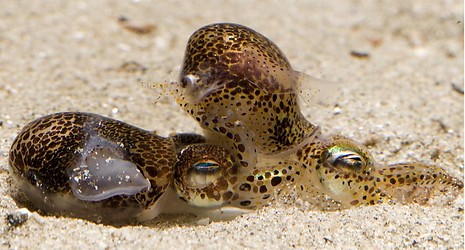Norway Post have issued the marine life stamp series on January 2, 2004, with the chosen species featured on stamps, Coronate medusa (Periphylla periphylla), Catfish, Little cuttlefish. The issues stamp comprised of three stamps as part of regularly issues stamps concerning the marine life species.
Periphylla periphylla is found in every ocean of the world apart from the Arctic, at 1,000 to 7,000 metres deep. Periphylla periphylla has an unusual life cycle and can live for 30 years. Periphylla periphylla can detect light, which it avoids.
It also produces flashes of light by a chemical reaction called bioluminescence that helps protect it from predators. Light is toxic to this jellyfish and it only moves up to shallower depths at night. Like many jellyfish Periphylla periphylla has large stinging cells on its tentacles that it uses to attack prey. However during the night Periphylla migrates from between 60 and 200 meters .
The main body of the Periphylla periphylla jellyfish can grown to 35cm with 12 tentacles growing to 50cm in length. The Norwegian name for this jellyfish is kronemanet. The color varies from pale pink or orange to dark red.

Catfish (Amarichas lupus)
Most catfish are bottom feeders. In general, they are negatively buoyant, which means that they will usually sink rather than float due to a reduced gas bladder and a heavy, bony head. Catfish have a variety of body shapes, though most have a cylindrical body with a flattened ventrum to allow for benthic feeding.

Little Cuttlefish (Sepiola atlantica)
Sepiola atlantica or Little Cuttlefish also known as Atlantic Bobtail is a neritic species found in the eastern North Atlantic. It occurs in waters just below the intertidal zone to depths of 150 m and prefers clean sandy bottoms (Guerra, 2012). It is a a species of bobtail squid native to the northeastern Atlantic Ocean (65ºN to 35ºN), from Iceland, the Faroe Islands and western Norway to the Moroccan coast. Like most sepiolids, Septiola atlantica is a small species reaching a maximum of 25 mm ML in both sexes, although the average size of adults is 12-15 mm ML (Rodrigues et al, 2011).Both sexes of this species grow to around 21 mm in mantle length.

Figure. Side view of the mating posture of S. atlantica. The male is to the left underneath the female on the right. Photograph by M. E. Garcí.
The female seems to initiate mating by swimming in front of the male. The male grabs the female in the midcentral region of her mantle then shifts to grasp the female's neck with the third arm pair and insert the dorsal arms into the female's mantle cavity. The left dorsal arm (hectocotylus) presumably passes the spermatophores to the female.


No comments:
Post a Comment